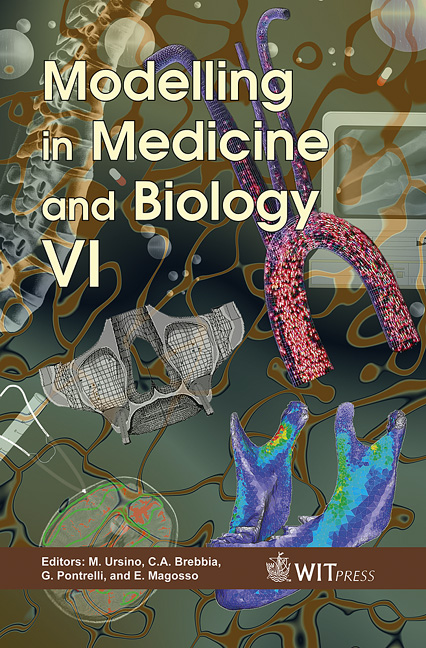Expiratory Flow Limitation In Mechanical Ventilation: A Model Study Of Lung Non-homogeneities
Price
Free (open access)
Transaction
Volume
8
Pages
10
Published
2005
Size
333 kb
Paper DOI
10.2495/BIO050031
Copyright
WIT Press
Author(s)
C. Brighenti, P. Barbini, G. Cevenini & G. Gnudi
Abstract
A non linear dynamic morphometric model of the human lung, based on Weibel’s symmetrical model, was recently proposed for studying expiratory flow limitation (EFL) during mechanical ventilation in normal and obstructive conditions. The model is modified to study what happens when only a certain part of the lungs is affected by an obstructive pulmonary condition. In particular we consider the two main bronchi separately and, starting from each main bronchus, we divide each lung into two distinct regions with different geometrical and mechanical characteristics. In each region we assume that all branches of a certain generation are identical. The obstructive condition is characterized by increasing the respiratory zone resistance and by decreasing the airway section of deeper generations (from 8 to 16). We also changed the transmural pressure–diameter curves of these generations to account for easier collapsibility of these airways. The latter changes are applied to (a) the pathological region/s only or (b) all four regions. In case (a) we observed that EFL is not present until the pathology affects all the regions. In case (b) moderate EFL was evident even when only 25% of the lungs were involved and increased with increasing percentage of involvement. From this preliminary study, therefore, EFL seems to develop only if distinct parts of the conductive zone become significantly collapsible. Keywords: breathing mechanics, expiratory flow limitation, mechanical ventilation, morphometric model, lung non-homogeneities.
Keywords
breathing mechanics, expiratory flow limitation, mechanical ventilation, morphometric model, lung non-homogeneities.





